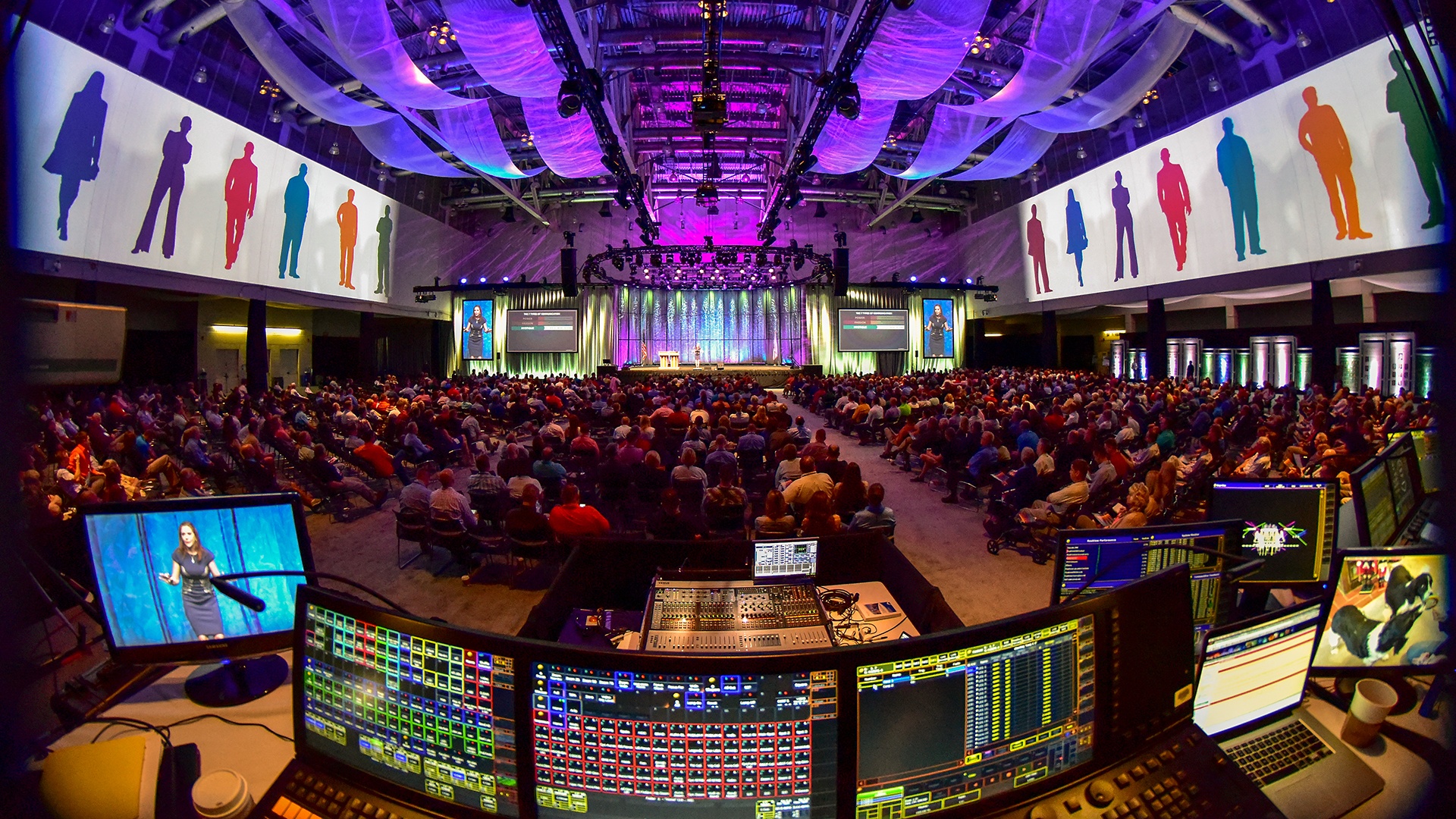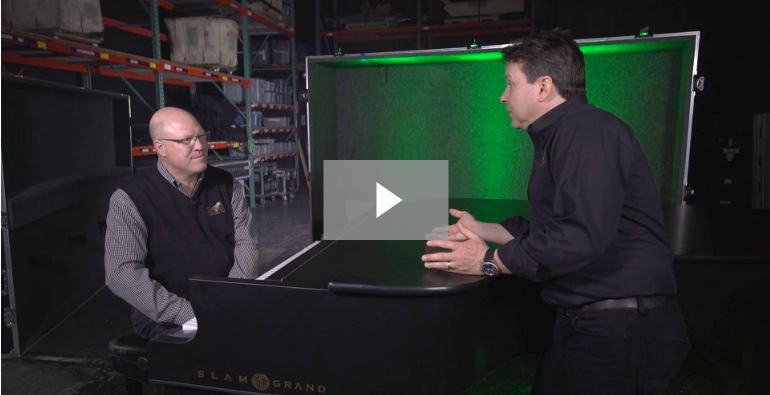August 14, 2018
Ask the Pros: Everything You Need to Know About Event Rigging
If you’ve ever attended a live concert, chances are you noticed the stellar light show dancing on the walls, ceiling, and over the faces of the people in the crowd. Those lights add so much visual appeal to the show and they’re crucial to illuminating the singer, but without rigging, a light show of that size couldn’t happen.
Not familiar with rigging? Here’s everything you need to know.
Rigging 101
Rigging is what your AV crew uses to suspend lights, speakers, draperies, etc. from above. Rigging is constructed of trusses (crossbeams or scaffolding), to which equipment, cables, and small motors are attached. The motors allow crew members to raise and lower the rigging for easy access, or to move lights, etc. for effects during the event.
Rigging Makes Your Event Look Better
To achieve the best light and projection angles, it’s best to mount AV equipment overhead. This allows your AV team to keep production equipment off the floor, where it would take up space and possibly get in the way of audience movement or enjoyment. Instead, rigging will give your event a cleaner, more professional look.
What if there are no rigging points or the ceiling is low? Then your AV team will use towers and platforms to raise lights, speakers, and projection equipment high enough to do the job. They’ll typically place them at the back of the room or along the side, which is not ideal, but a skilled rigging crew is also creative.
As an event planner, be mindful of the space you’re renting. AV teams typically need at least 10 feet above the stage to accommodate rigging. Better yet, take your AV advisor with you to tour a venue. They can easily tell you what type of setup the room can accommodate.
Safety is Paramount
Rigging can be extremely heavy. And the higher up things are, the greater the potential danger if something falls. Safety is always your rigging crew’s top priority. It also takes considerable technical knowledge and skill to properly rig AV equipment. That’s why riggers have to be certified before they are allowed to perform this work.
To help support the heavy equipment, hotels and conference centers have reinforced rigging points built into the ceiling to accommodate the weight, and they will give your AV team a rig plot (chart) that shows where they are located.
What About Cost?
If the production aspects of your event will be pretty straight-forward and the room is on the small side, it may be cheaper to use some floor stands or towers for your AV set-up — providing the room has ample floor space. But the larger your space or expected crowd, the more important rigging becomes to ensure the quality production you and your audience expect.
Labor accounts for about half the cost of rigging your project. So, the more rigging required for your event, the more expensive your AV will cost. Larger facilities typically have in-house or contracted rigging crews. If so, you will need to pay for their expertise, even if your own AV folks work alongside them. You should also be aware that venues often charge a fee to use their rigging points.
Above all, make it a point to sit down with your AV advisor and your venue rep at the very beginning. Work through the AV possibilities of the room, requirements, desires, etc. so you’re all on the same page. And the sooner you include your AV team the better. They can help you identify a venue perfect for setting up AV.




